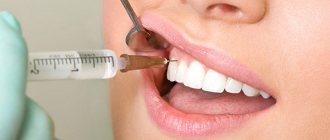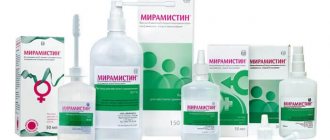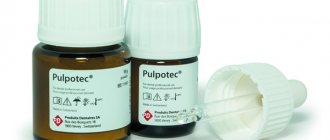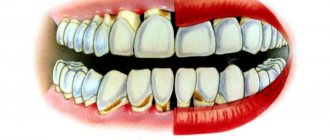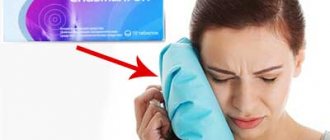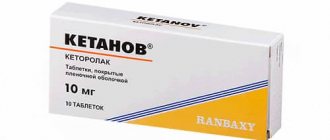In the work presented to your attention, we will discuss inexpensive painkillers. Many people probably know the opinion of Fyodor Mikhailovich Dostoevsky regarding pain - it is needed for a “wide heart.” From a medical point of view, this statement is incorrect. You should not take the words of a great man literally. Any pain must be treatable.
If it is not possible to buy expensive imported drugs, then you can always buy inexpensive painkillers. You can make the right choice by studying the information provided in the article.
Painkillers
Most often people suffer from acute pain. It occurs suddenly and lasts for a limited amount of time. The causes of pain of this nature include:
- fracture;
- stretching;
- internal organ injuries;
- caries and so on.
That is, acute pain occurs as a result of damage to the tissues of the human body. In order to get rid of these unpleasant sensations, you can use inexpensive painkillers, which belong to the group of analgesics. They are able to drown out pain, and this has a beneficial effect on the psyche, improves well-being and brings relief.
Cases of chronic pain are also often identified (they talk about it if the discomfort lasts for 6 months or more). As a rule, such pain is caused by chronic diseases. For example, some pathologies can manifest themselves as prolonged aching spasms and other unpleasant sensations. These include the following diseases:
- osteoarthritis;
- rheumatism;
- gout;
- malignant tumors and so on.
Of course, therapy should be aimed at eliminating the causes of the disease. But you can take inexpensive painkillers that can dull the pain.
As sad as it may sound, more than 80 percent of the world's inhabitants are faced with various forms of illness. It can put a person into a deep state of stress. To prevent this, you need to know when and what painkiller to take.
Antispasmodics
This group of painkillers primarily suppress spasms of smooth muscles of blood vessels, internal organs, gastrointestinal tract, urinary and biliary systems.
That is, you can take them to relieve pain:
- For gastritis, gastric ulcer;
- Renal and intestinal colic;
- In the complex treatment of cardiovascular diseases.
The most popular drugs are:
- Drotaverine;
- Papaverina;
- Bendazole.
Classification
Regardless of whether you buy cheap painkillers or expensive imported drugs, they are all subject to the same classification. It should also be taken into account that drugs belonging to the same group have a similar effect. Whatever drug you take from one group, it will reduce pain in the same way as the others.
Agree, when you go to the pharmacy to buy painkillers, it seems that no difficulties will arise. However, the pharmacist begins to ask a lot of additional questions and selects the drug that is right for you. The thing is that in pharmacology there are simply a lot of groups of painkillers. Now we will try to deal with them. Highlight:
- pyrazolones;
- combination analgesics;
- anti-migraine medications;
- anti-inflammatory non-steroidal drugs;
- narcotic painkillers;
- antispasmodics;
- specific analgesics.
Next, we will analyze each case separately and list medications that can be used to eliminate pain.
Classification of non-narcotic drugs
Another classification of analgesics divides drugs into classes depending on the components included in their composition and the principle of their effect on the body.
From the above data it is clear that the list of painkillers is very large. To choose the right remedy, you need to be well versed in analgesics that are used for different manifestations of pain.
Headache relief
If manifestations of pain in the temples or back of the head are associated with overwork, prolonged stress or colds, use drugs that are low cost and are available in pharmacies without a prescription.
If we are talking about migraine pain, then traditional analgesics will not help relieve the pain, so you need to take special anti-migraine medications.
- Citramon. A product whose popularity has not waned for several decades. Having a very affordable price, the drug dilates blood vessels well, relieving spasms, thereby eliminating pain. The combination of caffeine and aspirin also eliminates inflammatory processes, and paracetamol has a slight antipyretic effect.
People with poor blood clotting, ulcers and gout are not recommended to take the product.
- Analgin. The main active ingredient is metamizole sodium. The medicine eliminates inflammatory processes and reduces elevated body temperature, relieves pain. However, many doctors consider it outdated, since after taking it negative changes in blood circulation and allergic manifestations are noted.
Patients with pathological changes in the liver and kidneys, as well as pregnant women, should not use it.
- Sumatriptan. A strong pain reliever that is prescribed for regular migraine headaches. It has the form of tablets, which are coated with a film coating.
Considering that the medicine is prohibited for many categories of people, it can only be used after a doctor’s prescription. And if the dosage is incorrectly chosen, numerous side effects associated with the nervous or respiratory system will appear. Deviations in the functioning of the digestive tract, heart and blood vessels are also possible.
- Analgesics with a combined composition have proven themselves to be effective in eliminating headaches. These include Pentalgin and Solpadeine.
- Spasmodic manifestations of blood vessels are relieved by No-shpa and Bukospan.
Elimination of toothache
Just like other analgesics, these medications will only help relieve pain for a short period of time. Therefore, their use should not be long-term. But a visit to the dentist should be made as quickly as possible, since untreated teeth can lead to serious complications.
In acute attacks of toothache, preference should be given to the following analgesics:
- Ketorolac. The drug has a strong analgesic effect. The effectiveness of pain relief is at least 8 hours. However, the medicine has high toxicity, which, when taken for a long time, causes a negative reaction in the body.
If Ketorolac was taken immediately before visiting the doctor, anesthetics may be useless. Therefore, at the doctor’s appointment, you need to inform him about the pill you took.
- Nise. The main active ingredient is nimesulide, which is a representative of the NSAID group. Copes well with inflammatory processes in periodontitis, as well as pulpitis.
Considering that the drug is an NSAID, it should not be taken by persons with disorders of the gastrointestinal tract, liver failure, or during pregnancy and lactation.
It has a large list of adverse reactions of the body.
- Analgin or Spazmalgon can temporarily eliminate toothache of moderate intensity.
Postoperative pain and cancer
In the above examples, pain syndrome is eliminated with appropriate treatment, that is, elimination of the disease that caused it.
However, in oncology, pain haunts the patient throughout the entire course of therapy, so its relief is one of the components of treatment.
To eliminate pain symptoms, a special scheme is used, which consists of 3 steps.
- Stage 1.
The patient is taking non-steroidal anti-inflammatory drugs (we provided a list of the most popular drugs in this group above).
- Stage 2.
If these drugs are not effective enough, weak opiates are started. These include the following drugs:
- Oxycodone;
- Diphenhydramine;
- Hydrocodone;
- Promedol;
- Codeine.
At this stage, it is also possible to use drugs of a combined composition, the components of which are narcotic drugs.
- Stage 3.
If the influence of this group of drugs was unsuccessful, proceed to the third stage of using painkillers and use true opiates. These include the following medications:
- Trimeperidone;
- Bupronal;
- Sufentanil;
- Duragesic;
- Piritramide;
- Morphine.
Elimination of postoperative pain, as with cancer, begins with NSAIDs. When complications arise, analgesics containing opium are used. However, their use should not exceed three days.
Headache
In this section we will discuss the question of what inexpensive painkillers are available for headaches. To begin with, we note that headaches are a common problem of our time. It can help:
- loss of performance;
- irritability;
- nervousness and so on.
If headaches occur very often, it is better to consult a doctor. The thing is that this can be a symptom of many diseases. There are several types of headaches:
- migraine;
- overvoltage;
- vascular pain;
- liquorodynamic.
Medicines containing:
- ibuprofen;
- acetylsalicylic acid.
That is, these are non-steroidal anti-inflammatory drugs. This problem can also be dealt with by:
- antispasmodics;
- analgesics.
For headaches, you can take the following medications:
- "No-shpa";
- "Papaverine";
- "Galidor";
- "Analgin";
- "Paracetamol";
- "Baralgin";
- "Nurofen";
- "Citramon" and so on.
This is, of course, an incomplete list. At the moment, there are a huge number of painkillers. It is important to know that each body is unique, so medications should be selected individually. Do not self-medicate, as this can lead to serious problems. Follow the instructions on the package, do not exceed the dosage. Doctors do not recommend taking painkillers for more than five days. You should not combine several drugs at once. Do not drink alcohol together with medications.
Complex painkillers (Video)
One of the most popular complex painkillers are various triads , which are familiar to everyone since the times of the USSR. usually contain two analgesics and caffeine , such as Citramon, which contained ASA, phenacetin and caffeine. But today phenacetin is already prohibited for use, so Citramon P is produced with paracetamol instead of phenacetin.
The main component of such drugs is caffeine, which enhances and prolongs the analgesic effect. The quantity and quality of analgesics does not matter much. “Twins” - drugs made from one analgesic and caffeine, for example Panadol Extra, have a similar effect. Such medications are good for treating headaches and migraines, since caffeine can affect blood vessels.
Toothache
From this part of the article you will learn which inexpensive painkillers to buy for toothache. Surely, every person has experienced these unpleasant sensations at least once in their life. Some remedies will help get rid of pain. Whatever cheap painkillers you choose for toothache, they all belong to one of the groups described below:
- painkillers;
- anti-inflammatory;
- freezing.
Painkillers act as follows: they suppress the production of prostaglandins and the activity of cyclooxygenesis. Because of this, the nerve endings are temporarily blocked.
Anti-inflammatory drugs block the enzyme cyclooxygenesis. As a result, the sensitivity and intensity of inflammation decreases.
Freezing agents work when applied directly to the inflamed area. As a rule, they are presented in the form of ointments, gels and sprays. They contain a small amount of painkiller, which is absorbed and blocks the transmission of nerve impulses.
If the toothache is mild, then you can resort to the help of drugs such as:
- "Paracetamol";
- "Analgin";
- "No-shpa";
- "Drotaverine";
- "Askofen";
- "Spazmalgon";
- "Baralgin";
- "Nurofen".
The cost of the drugs provided varies from 10 to 200 rubles. All of them are available without a prescription. Pay attention to side effects, contraindications, correct dosage. All this must be indicated in the instructions for the purchased medicine.
For severe pain, medications will help:
- "Nimesulide";
- "Ketanov";
- "Pentalgin".
They are more effective and begin to act 15-20 minutes after administration. The analgesic effect lasts for 4-5 hours. The cost varies between 50-100 rubles. Although these drugs are recommended to be dispensed with a doctor's prescription, many pharmacies can provide them without one.
Top 10 drugs
Surface anesthetic agents begin to act a few minutes after application.
During application of the topical anesthetic drug, patients do not experience any discomfort, therefore, in comparison with the injection method, this type is considered the most comfortable and safe. Most modern anesthetics for external application can be used even in childhood, since they rarely cause side effects.
Such products have different forms of release, and each of them has its own advantages and disadvantages and is suitable for use on a specific area of the body. For example, in dental practice, gel-like products are used.
In addition to gels, topical anesthetics are produced in the form of:
- ointments and creams;
- aqueous and alcohol solutions;
- sprays and aerosols;
- dry powder powder;
- plates, plasters.
Topex
The product is available in the form of a gel for superficial anesthesia of the mucous membranes of the oral cavity. Topex is used to lubricate the gums before dental treatment procedures. The drug also helps block the gag reflex.
The main indications for use of the product are:
- the need for pain relief before injection anesthesia;
- manipulations carried out for periodontal diseases;
- curettage of gum pockets;
- ultrasonic teeth cleaning;
- radiovisiography.
The manufacturer of Topex gel is Sultan Healthcare (USA). The gel contains no toxic substances and is quickly eliminated from the body unchanged.
The anesthetic can be periodically used as a painkiller during teething in children of the first year of life. The gel is endowed with pleasant flavoring additives, which simplifies its use in childhood.
The main active ingredient in the oral gel is benzocaine, which is not absorbed by the mucous membrane and does not leave a specific aftertaste or bitterness after use.
The method of using dental anesthetic gel is simple: the product is applied to the gum surface using a special miniature brush. The analgesic effect begins immediately, but superficial anesthesia lasts no more than 5 minutes. If long-term pain relief is necessary, the gel should be applied to the tissue again.
Topex has no contraindications, with the exception of an individual allergic reaction. Available in pharmacies without a prescription. The price for 1 package (the drug is sold in 30 ml cans) is approximately 460-500 rubles.
Lidochlor
This product for topical anesthesia also has the form of a homogeneous, transparent, colorless gel. The product is available in 10 g tubes packed in cardboard boxes. 1 g of gel contains 20 mg of lidocaine.
Lidochlor can be used not only in dentistry, but also in ophthalmology for the purpose of pain relief, which the drug achieves by blocking the functioning of peripheral nerve nodes.
It should also be noted that this drug is often used in cardiological practice, prescribed to patients with ventricular arrhythmias in the post-infarction period in order to eliminate the consequences of glycoside intoxication. The anesthetic dosage regimen is determined by the doctor on an individual basis. Lidochlor begins to act after 5 minutes. after application.
In case of overdose, serious negative consequences are possible, including respiratory arrest and paralysis of the limbs. Lidochlor can cause loss of sensitivity of the skin and mucous membrane at the site of exposure, as well as allergic reactions: from skin rash and itching to anaphylaxis.
The average cost of the anesthetic gel is 1,100 rubles; the drug is available only with a prescription from a doctor.
Desensetin
The spray for topical anesthesia has an analgesic effect due to the lidocaine content of 10%.
The drug is indicated for use for the following purposes:
- anesthesia of the injection site;
- pain relief during minimally invasive manipulations in the oral cavity;
- stopping gag reflexes.
The spray can be used in dental treatment for children. The drug is available in 15 ml bottles, which are equipped with convenient nozzles that dose the volume of the injected solution.
For 1 application, up to 0.1 ml of anesthetic is injected into the nasal cavity. To avoid side effects, use the product in accordance with the accompanying instructions. The only contraindication for use is the presence of allergies.
The process of tissue anesthesia with Desensetin consists of 2 stages. So, after the first injection, the effect occurs within a few seconds. After 2 min. it is necessary to re-process the mucous membrane. It is necessary to press the pump at a distance of 1-2 cm from the treated area with an area of no more than 1.5 square meters. cm.
The cost of an anesthetic spray is on average 150-170 rubles. per package. The manufacturer of the drug is Belgorod. The Desensetin bottle should be stored in a dry place, protected from direct sunlight, at room temperature. Shelf life – 36 months. from the date of production. Belongs to the category of prescription drugs.
Disilane
Among the means for local anesthesia of areas of the oral mucosa, this Russian spray stands out. Its indisputable advantage is the possibility of use in childhood and the absence of side effects.
The anesthetic contains:
- benzocaine;
- polyethylene glycol;
- natural flavors;
- sucrose.
The spray is applied to patients on the oral mucosa if there are the following indications:
- removal of a tooth;
- injection administration of medications for periodontal diseases;
- manipulations to remove hardened plaque and stones.
If you are allergic to any of the components, do not use the spray. Contraindications for use are violation of the integrity of the oral mucosa, damage to the gums and tongue. This topical anesthetic is not suitable for children under 5 years of age.
The maximum effect from using Disilane occurs 1 hour after application. Superficial anesthesia lasts for 15 minutes.
Before applying the spray, it is necessary to dry the treated area of the mucous membrane. The maximum daily dose of benzocaine is 300 mg contained in 1.5 ml of Disilane spray, which equals approximately 10 injections.
The drug remains valid for 2 years from the date of manufacture (the production date is marked on the 30 ml bottle and cardboard packaging). The cost of the spray is in the range of 300-400 rubles. Dispensed from pharmacies with a prescription from a specialist.
Emla
Means for surface (application) anesthesia are widely used in cosmetology. One of the most popular is the composition with lidocaine and prilocaine Emla. The cost of anesthetic cream is 1700-2200 rubles.
The manufacturer considers the following indications for the use of this product:
- injections and vaccinations;
- punctures and catheterization of blood vessels;
- episiotomy (cutting the perineum during childbirth);
- cosmetic manipulations;
- hair removal;
- application anesthesia of trophic ulcers before mechanical treatment;
- molluscum contagiosum.
Emla cream can also be applied to the surface of the bikini area, and for better results after treatment, it is recommended to cover the skin with plastic wrap. The composition has a white color, uniform texture, and a pleasant smell. The cream is available in aluminum tubes of different volumes (5 or 30 g).
Side effects include temporary blanching or flushing of the skin, especially in patients with atopic dermatitis. The drug takes effect after 5-10 minutes. after application, and its effectiveness is not determined by color or degree of pigmentation.
The cream is contraindicated for use in case of hypersensitivity to amide anesthetics or any components in the composition. It is also not applied to the skin of premature newborn babies.
An overdose of Emla cream is considered unlikely if the regimen indicated in the annotation is followed. No pharmaceutical interactions were found during the studies. The cream can be stored under normal room conditions and not exposed to low temperatures. The shelf life of the drug is 3 years. You can buy Emla cream at any pharmacy without a prescription.
AneStop
Agents for superficial anesthesia of the skin based on amethocaine (a derivative of tetracaine) differ from analogues in their high duration of action. AneStop cream is produced by the Spanish company PRO-MEDIC in 40 g tubes. The price of the drug is about 1800 rubles.
The analgesic effect is achieved due to the content:
- amethocaine;
- propitocaine;
- lignocaine;
- dexpanthenol;
- benzyl alcohol.
An expensive topical anesthesia cream AneStop is used as an auxiliary medical product in cosmetology.
Indications for its use are the following procedures:
- all types of peeling, including laser;
- piercing;
- facial contour correction;
- mesotherapy;
- Permanent makeup;
- dermatosurgical procedures associated with the removal of molluscum contagiosum and benign formations.
Anestop cream is a white gel-like mass without a specific aroma. The drug has a viscous consistency. The drug is considered hypoallergenic and therefore does not cause adverse reactions.
The basic principle of using the cream is to apply it three times with an interval of 5-10 minutes. AneStop is sold in pharmacies and is available without a prescription.
Akriol Pro
The topical anesthetic for local external use is a homogeneous white mass with a weak specific aroma. The cream's analgesic function is performed by lidocaine and prilocaine, which are contained in a concentration of 2.5 g per 100 g.
, Moscow region) produces cream in aluminum tubes of 5, 30 and 100 g, so the price of the drug ranges from 211 rubles. up to 2200 rub.
Akriol Pro has the same indications for use as previous topical anesthetics for the skin. The product can be used on the mucous membrane of the genital organs. The dosage and duration of pain relief depends on the purpose of using the cream.
It is important to consider that the drug can cause side effects:
- redness of the treated area;
- itching;
- burning;
- hemorrhagic rash.
Infants weighing less than 3 kg should not use the drug. Caution should also be exercised in elderly patients, pregnant and lactating women. There are no special instructions for the use of Acriol Pro in cases of impaired liver or kidney function. The cream is an over-the-counter drug.
Inocaine
Preparations for surface anesthesia in ophthalmology are available in the form of eye drops. One of them is the drug Inocaine based on oxybuprocaine hydrochloride. Eye drops have a 0.4% concentration of the active ingredient. The price of a 5 ml bottle with a colorless solution averages 122 - 143 rubles.
Inocaine's action is achieved by blocking nerve endings with oxybuprocaine. The drug penetrates the mucous membrane of the eye in 10-15 s, so it is fully effective within 1 minute after instillation.
Compared to tetracaine, it does not irritate the conjunctiva and cornea. The analgesic effect lasts for 15 minutes.
Ophthalmologists have to resort to using Inocaine when performing the following manipulations:
- tonometry (measurement of pressure in the vessels of the fundus);
- gonioscopy;
- diagnostic scraping of the conjunctiva;
- removal of foreign bodies;
- removal of sutures from the cornea and conjunctiva;
- short-term surgical interventions on the cornea or conjunctiva.
The anesthetic is instilled into the conjunctival sac of each eye. The number of drops and frequency of instillation depends on the desired duration of pain relief. The maximum duration of local anesthesia is applied 3 times at intervals of 4-5 minutes. can reach 1 hour.
Side effects that do not require discontinuation of the drug are tingling, burning sensation, and redness of the conjunctiva. Inocaine is contraindicated in case of an allergic reaction to the contained components.
It is also worth noting that the drug is not intended for course treatment of ophthalmic diseases. There is no confirmed information about an overdose of eye drops. Inocaine is dispensed only with a prescription from a doctor.
The anesthetic should be kept away from sunlight and children. The product must not be frozen. The drops must be used within 2 years from the date of production and within 30 days after opening the bottle.
Alcaine
Proximethacaine is the main active ingredient in eye drops that has anesthetic properties. The component belongs to the group of esters used primarily in ophthalmology. The cost of a 15 ml bottle is 500 rubles. The product is available by prescription.
The activity of proxymetacaine appears 30-60 s after instillation. A single use allows you to achieve mild superficial anesthesia of the eyeball for 15-20 minutes.
Alcaine is used for any manipulations performed with local and short-term anesthesia:
- diagnostics;
- tonoscopy;
- tonometry;
- removal of foreign objects.
The anesthetic should be used in 1-2 drops. Eye drops are instilled immediately before a medical or research procedure.
In patients prone to allergies, the drug can cause burning, redness of the sclera and intense lacrimation. The appearance of these symptoms may be a reason to discontinue the drug.
Tetracaine
Tetracaine topical anesthetics are often used by ophthalmologists to block the transmission of nerve impulses.
The substance quickly penetrates the mucous membrane of the eye and has a long duration of action compared to other topical anesthetics - up to half an hour.
The cost of Tetracaine eye drops varies between 450-500 rubles. per bottle with 10 ml of medicinal solution. The drug is a transparent yellowish solution. Tetracaine is indicated for use in cases where there is a need for superficial anesthesia for short-term procedures. You can drop no more than 2-3 drops into both eyes at a time.
Tetracaine is not prescribed to children under 10 years of age. The drug is also contraindicated in patients with damage or inflammation of the mucous membranes.
Almost nothing is known about cases of overdose, but an excess amount of tetracaine can cause dizziness, asthenia, emotional overexcitation, anxiety, tremors of the limbs, convulsions, respiratory failure and dyspeptic disorders.
Once opened, Tetracaine remains usable for 30 days. After the expiration date of the drug, which is 2 years from the date of release, the use of eye drops is prohibited. This anesthetic is available by prescription.
The use of surface (application) anesthesia allows one to achieve local anesthesia of the mucous membranes and skin. The main advantage of local anesthetics is their ability to instantly penetrate the tissue of the treated area, making the treatment or diagnostic process as comfortable as possible for patients.
Haemorrhoids
In this section, we will list painkillers for hemorrhoids (inexpensive and effective). Often people with this illness put off going to the doctor, trying to get rid of it on their own. This is a very big mistake.
There are two methods in the treatment of hemorrhoids:
- operational;
- conservative.
The second is effective only in the early stages. For this reason, it is worth visiting a proctologist after the first symptoms appear - he will prescribe the correct treatment. Now we will look at conservative treatments. Therapy includes the use of several groups of medications:
- ointments for hemorrhoids;
- tablets to normalize blood circulation;
- drugs to relieve inflammation;
- medications for proper bowel function;
- traditional medicine;
- physiotherapy;
- massage.
Now about painkillers. It is important to note that this problem often occurs in women during pregnancy or after childbirth. Almost all drugs are natural, therefore, will not harm the baby. The following medications will help relieve pain from hemorrhoids:
- "Detralex";
- "Hemoroidin";
- "Phlebodia";
- "Litovit B";
- "Pylex";
- "Asklezan A";
- "Pentalgin";
- "Ibuklin";
- "Nise."
It is important to remember that self-medication can only cause harm, so consult a doctor. He will draw up a treatment regimen and write out a prescription for purchasing medications at the pharmacy.
Painkillers for menstruation
Pain in the first days of menstruation is common. As a rule, they are quite tolerable, but there are cases when the pain is intense.
First, let's decide on the wrong tactics - endure. Why shouldn't this be done? Pain is not only a physical discomfort, but also a major stress factor. It is for this reason that we will highlight inexpensive painkillers for menstruation.
What is this pain associated with? Before and during menstruation, the endometrium is rejected, and the uterus itself begins to contract chaotically. This is what leads to pain. In this case, painkillers and uterine relaxants will help. For starters, we list the antispasmodics that will cope with pain:
- "No-shpa";
- "Drotaverine";
- "Papaverine";
- "Spazgan";
- "Trigan."
It is also important to note the fact that during heavy periods, taking antispasmodics is highly not recommended. Be sure to follow the instructions on the package.
Next, we will provide a list of analgesics that will help eliminate not only pain, but also fatigue, drowsiness, and fever. Available without a prescription:
- "Analgin";
- "Baralgin";
- "Panadol";
- "Efferalgan";
- "Novalgin".
All medications have side effects and contraindications. Read the instructions carefully.
Now we will arrange painkillers during menstruation in descending order of strength:
- "Ketanov";
- "Indomethacin";
- "Ibuprofen";
- "Aspirin".
Be sure to eliminate pain, as it has a bad effect on the entire body.
Characteristics of the most common painkillers
Some drugs are still produced from Soviet times. Their expensive analogues basically contain the “old” active substance, but the fact that they are produced under new names does not change their effect.
Acetylsalicylic acid (Upsarin, Tromboas, Cardiax, Aspicor, Citramon, Aspirin)
The most famous drug in the group of anti-inflammatory non-steroidal drugs. It is used for headaches, to thin the blood, and as an antipyretic. Only people over 15 years old can take it. It is contraindicated for pregnant women. People with liver and kidney diseases should take it with caution. Also, you should not mix it with alcohol. Fatal cases of mixing Aspirin with alcoholic beverages have been recorded.
Paracetamol (Panadol, Daleron, Coldrex, Sanidol, Efferalgan)
The easiest pain reliever and antipyretic drug. For children it is produced in the form of Panadol syrup, which is given at fever. Also approved for use by pregnant women. Its effect is weak, but it is still necessary to follow the instructions, otherwise side effects may occur in the form of liver failure. Panadol, due to its sweet taste, is often used by children without the knowledge of their parents, so the drug must be carefully hidden.
Ibuprofen (Nurofen, Ibuprom, Ipfen)
This drug is often used for headaches and toothaches. It is also effective for joint pain and cramps during menstruation. It has a weak effect and is allowed to be given to children, but only in accordance with the instructions. It is prohibited for use by persons suffering from various forms of stomach, duodenal or rectal ulcers. Despite its weak effect, the drug can also damage the liver and kidneys with long-term use.
No-Shpa (Drotaverine, Spazoverine)
Since Soviet times, everyone has known the drug No-Shpa for its bitter taste and wide distribution. However, its spectrum of action is quite narrow. The medicine is effective only for muscle pain and spasms. It is often used during childbirth to relieve the uterine cramps of the mother in labor, as well as painful periods. The drug is contraindicated for children under 6 years of age.
Pain relievers for throat
Everyone, without exception, has felt a sore throat at least once in their life. The pain may be mild or severe to the point that it is impossible to eat or talk.
The causes of discomfort can be very diverse, but more often they are viruses that cause infectious and inflammatory diseases. Remember how a cold usually starts? Of course, with a sore throat! After a few days, other symptoms appear.
Viral pharyngitis goes away on its own in about 5 days. A doctor's help is not required in such cases. But what if the pain is severe enough? Medicines will come to our aid. Now we will list the cheapest painkillers for the throat:
- "Paracetamol";
- "Ibuprofen";
- "Naproxen."
In addition, you can resort to traditional medicine and sprays that can relieve pain.
How do pain pills find where it hurts?
This answer is written and available at
This answer is written and available on Yandex Q
Various medical drugs use each of these approaches. Analgesics reduce pain without blocking nerve impulses, working with sensory perception or changing consciousness.
They come in different types, including anti-inflammatory drugs that reduce pain by reducing inflammation. Analgesics also include COX inhibitors, which stop signals, and opioids, which reduce the severity of pain signals in the brain and nervous system.
When analgesics stop working, doctors turn to anesthetics, which simply block all sensations, pain or anything else, knocking out a person or causing numbness in a particular area. blasti.
Thus, these procedures do not focus on pain, rather they wander around the body in search of messages about pain, and then block them, destroy them, or intercept them. To understand how this works, let's take a closer look at the physiology of pain.
Sending and receiving messages about pain
The question of understanding pain has troubled philosophers, doctors and researchers for centuries. In the Far East, it all started with the idea of unbalanced forces of yin and yang. The ancient Greeks believed that pain is faulty bodily juices. The Muslim doctor Avicenna saw pain as a result of some changes in physical condition.
And, of course, numerous cultures believed that the gods gave pain as punishment and required it as repentance.
Practical research on pain was carried out in the 19th and 20th centuries, however, medical and technological advances of the last 40 years have revolutionized this field. Next we will talk about a common model of how pain works.
Who are nociceptors
For example, you touch something hot and burn your hand. Instantly you pull it back, but you feel pain because the system of specialized nerves called nociceptors (from the Latin “noci” - harm + receptor) is already activated on.
Unlike other types of nerves, nociceptors become active only when a person is harmed, for example, he feels excessive pressure or touches something o hot.
When this happens, the nerves convert painful stimuli into an electrical signal that travels to the brain at lightning speed, carrying bad news. But how? Their nerve endings change shape, creating pores through which positively charged ions pass.
This influx of ions enters the cell membranes and generates electrical potential. The stronger the injury, the more active the signal.
This system takes care of notifying the brain and spinal cord, but how do nociceptors detect damage? In several ways, the work of many of which is still being followed by the scientific world.
Often nociceptors detect peculiar chemical substances, such as prostaglandins. These are not molecules of pain. On the contrary, they are chemical elements that help various vital parts of the body function. But they do not become overly active if something goes wrong, they simply give a signal about “good” damage.
Nociceptors do not always need such chemical substances to do their job. They can also detect some harm on their own. Excessive heat, for example, can independently open ion channels that supply a signal. This is how capcaicin works in chili peppers.
No time for pain
Pain keeps us away from troubles. When the system is not busy preventing injury, it reduces or increases signals that it is time to treat old pain. But sometimes the pain becomes a hindrance, like a warning bell that continues to ring even after the fire has been extinguished.
One of the ways to turn off such noise is to reduce the signal from the source. Ibuprofen does this trick: it stops the work of pain cells or produces more prostaglandins.
Ibuprofen is a whole category of pain medications called nonsteroidal anti-inflammatory substances (NSAIDs). They can also relieve inflammation and swelling that can cause pain.
Other analgesics ignore the pain signal, but drown out the “ringing of the bell.” Drugs containing paracetamol work directly in the brain and central nervous system to numb pain, but experts have not yet fully understood how are not functioning.
Both NSAIDs and paracetamol belong to a category called “non-opioid analgesics”. Most of these analgesics work by inhibiting the functioning of cyclooxygenase (COX) enzymes and cyclooxygenase-2 (COX-2) enzymes, which initiate the process of axidon conversion ovo fatty acid into prostaglandin.
It is prostaglandin that activates pain nerves.
If there is no prostaglandin, then the nociceptors do not begin to work, and, consequently, there is no pain.
To relieve long-term or short-term pain after surgery, many doctors turn to opioids. These drugs connect to an existing network of receptors located in our brain, spinal cord and throughout the body.
Pain relief
Under normal conditions, this system works with opioids naturally released by the body, which control all types of processes, including pain. Natural opioids, such as morphine and codeine, and synthetic opioids, imitate the structure of these neurotransmitters and “hijack” the system.
They behave like spies who get rid of guards and who control the supply of all signals, including pain ones. They also “connect” to the body's reward system.
More serious medical procedures, such as surgery, require general or local anesthesia. General anesthesia is a mixture of drugs that calm the patient and keep him unconscious, reduce or remove his pain, relax his muscles, and block his memory. world of memories of the operation.
Local anesthesia blocks sensations only in some parts of the body, for example, from the waist down, or can “block” only one leg, an area of skin, etc. This may seem like something too localized, but again, the pain sufferer does not know the place where you are currently hurting, only the person who is doing it knows about it you're in pain.
My personal experience. My lower back hurt very badly. I came to the hospital and they did an MRI and they said: “You have a hernia and grade 4 osteochondrosis.” Get ready for the operation”... I almost fainted there! Horrible! What surgery, I'm only 38? It turns out that even at this age you can get grade 4 osteochondrosis. But it all started with ordinary pain in the lower back, which then became chronic, aching, and then a hernia of the lumbar spine formed! She made it difficult to sleep and walk. I refused the operation because I was afraid of the anesthesia: I might fall asleep and never wake up again. I also have heart problems. As a result, they prescribed me a bunch of useless medications, and when I returned, the doctors simply shrugged, saying, what do you want, you have to do an operation... A couple of months ago, on the Internet, I came across one article that literally saved me. I regained my health and the pain went away! I am so grateful to fate, to the chance that brought me to this article! Finally my spine is healthy, all thanks to this article! Anyone who has BACK AND JOINT PAIN is a MUST read! Now there is NO PAIN, I sleep normally, walk and work in the country. For those interested, you can read the interesting article in detail at this link.
Stomach pain
Now we will list cheap painkillers for stomach pain. By the way, discomfort in the epigastric region may indicate the presence of a variety of ailments. To determine the problem, it is necessary to undergo a comprehensive examination. But many medications can relieve pain. They can be divided into the following groups:
- antispasmodics;
- antacids;
- blockers;
- preparations containing bismuth.
Antispasmodics that relieve stomach pain:
- "Papaverine";
- "Drotaverine";
- "No-shpa";
- "Spasmomen";
- "Buskopan" and so on.
Antacids:
- "Phosphalugel";
- "Almagel".
Proton pump blockers:
- "Omeprazole";
- "Pantoprazole."
These drugs not only reduce pain, but also promote recovery. They are prescribed for gastritis and ulcers.
Containing bismuth:
- "De-nol";
- "Vicair", etc.
Be sure to consult a doctor with this problem, because the consequences of stomach diseases can be very unpleasant. Do not self-medicate, carefully read the instructions for the drug.
Basic painkillers
Despite the fact that in pharmacies we can see a great variety of analgesic drugs. But these are just trademarks. In fact, there are 4 main substances that can relieve pain:
- Aspirin.
- Paracetamol.
- Ibuprofen.
- Analgin.
Aspirin
Its professional name is acetylsalicylic acid. This drug is very well known to everyone. Over the years, it has proven effective in combating pain and fever. But he is not as harmless as he might seem. Aspirin can cause liver disease and Reye's syndrome. It is contraindicated for children under 14 years of age. Also, the drug strongly irritates the mucous tissues of the stomach, therefore it is contraindicated for gastritis and ulcers. Its use for relieving menstrual pain is not recommended. It is better to take it after meals with water, or preferably milk.
Paracetamol
The safest analgesic. It is not so toxic and reduces fever well. Therefore, it can be used during pregnancy and pediatrics. But with prolonged use, it still has a negative effect on the liver.
Ibuprofen
Rarely has side effects. In addition to analgesic, it has an anti-inflammatory effect. Often prescribed for bruises and joint pain. Can be prescribed to children. Helps relieve menstrual pain. To achieve a good effect, ibuprofen must be taken several times a day. If it irritates the gastric mucosa, it is rare. With long-term use, it can have a negative effect on kidney function, which is why doctors prefer to prescribe it in episodes.
Analgin
Analgin is used very often and in some cases incorrectly. Therefore, WHO is seeking to reduce the frequency of taking this drug. It has a lot of side effects: it inhibits the functioning of the hematopoietic system and negatively affects the kidneys and liver. It is better to listen to doctors and use analgin only when absolutely necessary. But it also has undeniable advantages over other painkillers: it quickly relieves pain, it can be administered intravenously or intramuscularly.
Nimesulide
This drug has been little studied. It has a pronounced analgesic effect and does not irritate the stomach. Has a long-lasting effect – up to 12 hours. But it can interfere with liver function. There are countries in which it is prohibited for use in pediatrics. And since it can cause drowsiness, the drug is contraindicated when driving a vehicle.
Combined products
They combine several active ingredients at once. They are able to enhance each other's effects. Often such drugs are used in difficult cases. Strong painkillers most often consist of several components. They often contain phenobarbital, codeine, and caffeine. They enhance the effect of the analgesic. One of the popular such drugs is solpadeine. It is based on paracetamol, the action of which is complemented by caffeine and codeine. Another popular product - Pentalgin - contains caffeine, phenobarbital, codeine, which enhance the effect of the main substances - analgin and paracetamol.
Of course, such combination products have a powerful effect. But they can also cause a number of side effects.
Pain relievers for joints
Cheap painkillers can also help with joint pain. The list is given below. But first, it’s worth saying that joint diseases are very common. As a rule, pathologies are accompanied by severe pain, from which you need to get rid of. An experienced specialist can help you choose the right drug. This article is for informational purposes only - do not self-medicate.
List of drugs for joint pain:
- "Analgin";
- "Baralgin";
- "Ibuprofen";
- "Nurofen";
- "Paracetamol";
- "Pentalgin";
- "Spazmalgon";
- "Nise";
- "Nimesil";
- "Promedol."
It is also important to note that the latter drug belongs to the group of narcotic drugs. It should be taken only in extreme cases and strictly on the recommendation of a doctor. It is impossible to purchase it without a prescription at a pharmacy.
Painkillers during pregnancy
In this section we will briefly cover the question of which painkillers can be used during pregnancy. Even this wonderful time in the life of every woman can be overshadowed by various diseases. Expectant mothers try, if possible, not to use any medications at all, and their fears are completely justified. But what if pain medication is still necessary? Give preference to the following:
- "Paracetamol";
- "Nurofen";
- "No-shpa";
- "Riabal."
All medications should be taken with caution: be sure to consult your doctor.
Prospects for analgesics
The class of analgesics continues to actively develop. Although their active research has continued for more than a century, the search for effective and safe painkillers continues. Scientists are actively trying to explore new classes of such drugs. These substances have high analgesic effectiveness. They actively influence the process of transmitting pain sensations at various stages. Research is also underway on those agents that can influence those structures of our body that can suppress pain.
But there are cases in which opioids are most effective. Therefore, in our country, many doctors are making attempts to soften the requirements for their registration. But this also has an important drawback. If it is possible to relax the bureaucratic requirements for the issuance and recording of opioid drugs, then all responsibility for prescribing such drugs and their use will fall on the doctor himself. Practitioners will have to try to follow the gradation of treatment. The main key to success in the fight against pain is to determine its nature, source and mechanism of occurrence. Doctors should strive to ensure that treatment is staged. It is very important to clearly explain to the patient all the objectives of such treatment and the duration of the drug. When prescribing opioid medications, possible psychosocial risk factors must be adequately assessed. Opioid and narcotic analgesics are used in serious cases when other groups of analgesics are ineffective. It is important that the doctor explains how to use it correctly and carefully monitors this in the further course of treatment.
What do strong analgesics consist of, and how to use them correctly so as not to cause irreparable harm to health? What can happen in case of overdose? Can they cause serious side effects? Each of us needs answers to all these questions. After all, we regularly use painkillers.
Pain syndrome accompanies many pathological conditions. And therapy often begins with the pain relief stage. What drugs will help cope with pain best? How do they “work”? Can they provoke new diseases?
We have already mentioned that analgesics are divided into two groups: non-narcotic and narcotic. They have different mechanisms of action.
